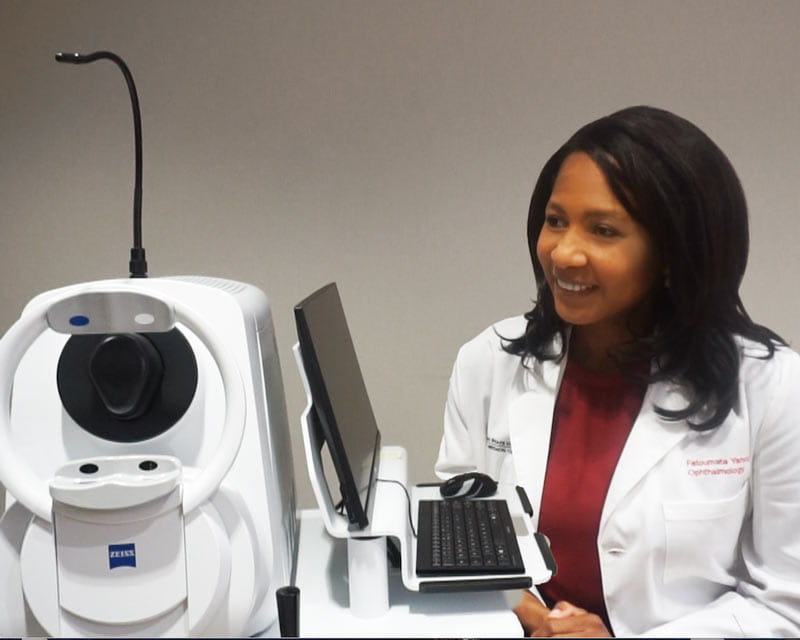
Swept-source OCT angiography reveals exquisite details of ocular structures
 Evaporative dry eye is not only a source of great discomfort for patients, it can greatly increase the risk of eye infection, inflammation and abrasions — even corneal ulcers and vision loss. Intense pulsed light (IPL) has been shown to effectively target one of the root causes of dry eye — meibomian gland dysfunction — and improve symptoms and outcomes. It has now been approved for treatment and is being used successfully at The Ohio State University Wexner Medical Center.
Evaporative dry eye is not only a source of great discomfort for patients, it can greatly increase the risk of eye infection, inflammation and abrasions — even corneal ulcers and vision loss. Intense pulsed light (IPL) has been shown to effectively target one of the root causes of dry eye — meibomian gland dysfunction — and improve symptoms and outcomes. It has now been approved for treatment and is being used successfully at The Ohio State University Wexner Medical Center.
IPL has long been used to treat certain skin conditions. Research has shown that it can effectively treat dry eye, mainly in three ways. It can:
In April 2021, the Food and Drug Administration approved an IPL device for the treatment of dry eye.
“Dry eye is quite common — more than 40 million Americans have it,” says Ohio State ophthalmologist David Castellano, MD. “So this new use for IPL could benefit many of our patients.”
The IPL is applied in a band from ear to ear, so protecting the skin afterwards with sunscreen is vital to avoid burns and skin damage.
“We send patients home with sunscreen on, and encourage them to reapply it often,” Castellano says.
Other side effects are rare and usually mild. They can include skin redness, sensitivity, tingling and slight inflammation from gland expression.
“Dry eye can be challenging to treat and frustrating for patients,” Castellano says. “IPL is a great tool that we can offer to patients who we’ve not been able to treat successfully with other means.”